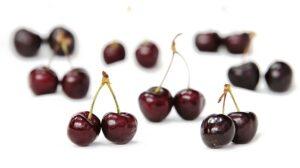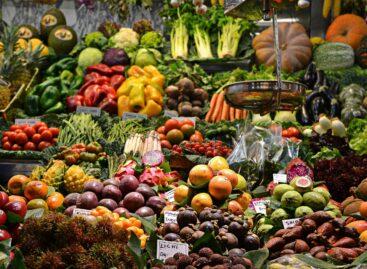Cherry growers expect a smaller than average harvest
The cherry season is in full swing, but due to the extreme spring weather, a smaller harvest than the average of previous years is expected. However, lower yields are not only characteristic of Hungarian plantations. Therefore, according to the expectations of the National Chamber of Agriculture (NAK) and the Hungarian Fruit and Vegetable Association (FruitVeB), the Hungarian cherry can gain a favorable position on the European market.

(Photo: Pixabay)
This year’s fruit season cannot be considered average, due to the mild winter and early spring, vegetation started three weeks earlier than usual. By the end of March, the flowering of the cherry took place practically all over the country. The frosts that arrived on March 19-20 hit the cherry blossoms while they were still in flower buds, causing significant damage to only a few plantations, but still had an impact on the ability of the flowers to reproduce. It was unusually hot during the flowering period, which took place explosively in some places and dragged on in others, and because of this, the buds dried up quickly. Thus, even if the bees visited with sufficient intensity and pollination took place, fertilization was not achieved, which left its mark on this year’s crop prospects. Towards the end of flowering or shortly after its completion, a stronger cooling wave of one and a half weeks arrived with low temperatures and overcast, low-light weather, which was not favorable for fruit setting. Night frosts during the cooling wave in mid-April caused substantial damage to the smaller fruits.
For this reason, a lower-than-average harvest is expected, which is true not only for domestic, but partly also for European growing regions
Although it is difficult to accurately estimate this year’s quantities due to the heterogeneity of the harvest, according to the expectations of market players, a cherry harvest of between 50,000 and 57,000 tons is expected. This is practically the same as the previous year’s level, which was also weak. In the north-eastern region of the country, where about half of the cherry-growing area is located, the harvest is clearly weaker, which is primarily due to the damage caused by the frosts on April 19-21. In the other regions of the country (Transdanubia, Pest, Bács-Kiskun, etc.), a similar harvest to last year is expected. A significant part of the domestic cherry crop is used by the canning industry, the refrigeration and canning season started earlier than usual, already at the beginning of June. Cherry picking started in South Transdanubia and Bács-Kiskun, but due to the early start of the season, it will end earlier this year. There is no problem with the quality, the rain in May favored the development of the fruit size. On the other hand, the cherry fly appeared in the first half of May, in the middle of May, so it was necessary to protect oneself much earlier than usual to avoid more damage.
A significant part of the domestic cherry goes to export markets 25% of the export is fresh cherries, 70% canned, 5% frozen
Export opportunities and purchase prices can be positively influenced by the fact that a lower harvest is expected in Poland this year as well. The shortage of raw materials is particularly affecting the Polish refrigeration industry, given that frozen cherry stocks are empty all over Europe, and customers expect service. Since the cherry harvest is weaker in other European countries as well, in addition to Poland and Germany, which are our main export markets, more intense interest in Hungarian cherries can be expected from the Czech, Slovak and Dutch markets.
The sour cherry is a real superfruit, and its consumption is primarily recommended fresh, as this is how its beneficial physiological effects are best utilized. Cherry is a fruit extremely rich in vitamins and minerals, and in addition to its significant vitamin C content, it is an excellent source of iron, calcium, potassium and magnesium. It stimulates the functioning of the nerves, aids digestion, and its diuretic effect is well-known.
NAK
Related news
The Ministry of Agriculture is helping dairy farmers with a new tender
🎧 Hallgasd a cikket: Lejátszás Szünet Folytatás Leállítás Nyelv: Auto…
Read more >AM: Tax and administrative burdens for farmers to be reduced from January 1
🎧 Hallgasd a cikket: Lejátszás Szünet Folytatás Leállítás Nyelv: Auto…
Read more >Domestic fruit production fell sharply in 2025, while producer prices plummeted
🎧 Hallgasd a cikket: Lejátszás Szünet Folytatás Leállítás Nyelv: Auto…
Read more >Related news
Circular transition more urgent than ever
🎧 Hallgasd a cikket: Lejátszás Szünet Folytatás Leállítás Nyelv: Auto…
Read more >Ads Interactive Media Group will sell the retail media platforms of Auchan Hungary Kft. stores from 2026
🎧 Hallgasd a cikket: Lejátszás Szünet Folytatás Leállítás Nyelv: Auto…
Read more >Foxfilm teaches entrepreneurs how to make videos
🎧 Hallgasd a cikket: Lejátszás Szünet Folytatás Leállítás Nyelv: Auto…
Read more >







